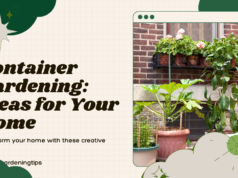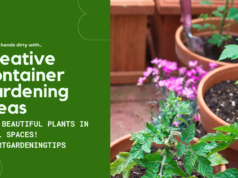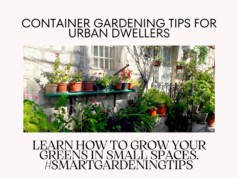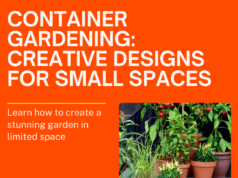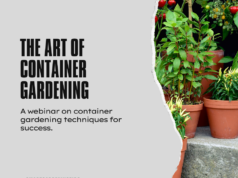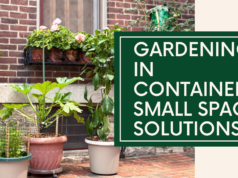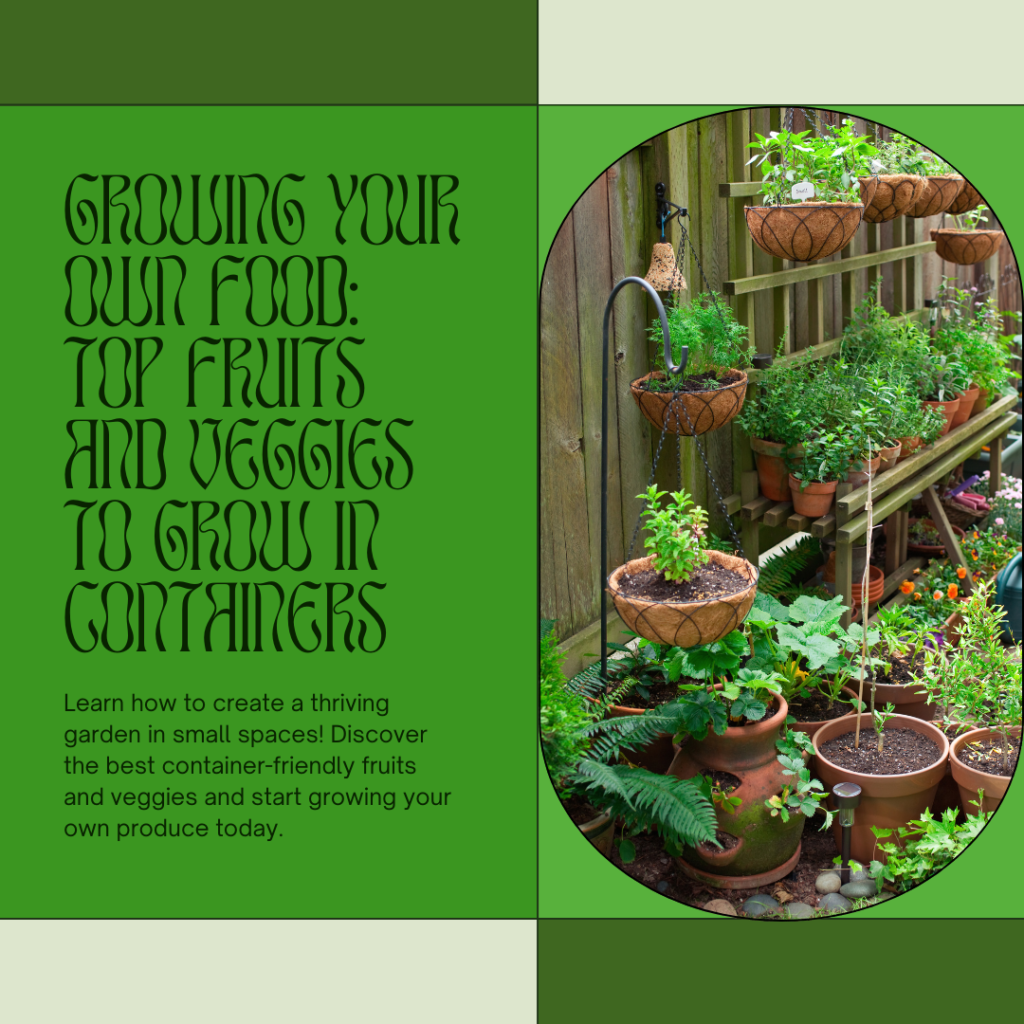
In this article, we will explore the top fruits and veggies that are perfect for growing in containers. Container gardening allows you to grow your favorite produce right at home, even if you have limited space. We will provide you with tips and guidance on selecting the ideal containers, maintaining proper drainage and soil quality, and growing healthy and abundant plants. Get ready to enjoy lush tomatoes, sweet strawberries, flavorful herbs, and sunshine-filled citrus trees all in the convenience of your own container garden.
Key Takeaways:
- Container gardening is a great way to grow fruits and veggies in small spaces.
- Tomatoes, strawberries, herbs, and citrus trees are excellent choices for container gardening.
- Choosing the right containers and maintaining proper drainage and soil quality are essential for successful container gardening.
- Container gardening offers easy maintenance, accessibility, and control over growing conditions.
- Start your container garden today and enjoy fresh produce throughout the year!
Choosing the Right Containers for Your Garden
When it comes to successful container gardening, selecting the right containers for your plants is essential. The right containers not only provide a suitable environment for your fruits and veggies but also add aesthetic appeal to your garden. In this section, we will explore different types of containers and guide you on how to choose the ideal ones for your gardening needs.
Types of Containers:
There are various types of containers available for your garden, each with its own advantages and considerations. Here are a few popular choices:
- Pots: Pots are versatile, portable, and come in a wide range of sizes and materials. They are suitable for growing most fruits and vegetables.
- Hanging Baskets: Hanging baskets are great for trailing plants or those that need ample sunlight. They add a touch of verticality to your garden.
- Troughs: Troughs offer a larger planting space, making them ideal for growing vine-like plants such as tomatoes and cucumbers. They also provide better stability due to their shape.
It’s important to consider the specific needs of your fruits and vegetables when choosing containers. Some plants may require deeper pots for healthy root development, while others may thrive in shallow containers. Keep in mind that adequate drainage is crucial for preventing waterlogging and maintaining plant health.
“The container should provide enough space for the plant to grow, allowing its roots to spread and absorb nutrients effectively.”
Ensuring Proper Drainage and Soil Quality:
Proper drainage is essential for container gardening since excess water can lead to root rot and other plant diseases. To ensure effective drainage, consider the following:
- Choose containers with drainage holes at the bottom.
- Add a layer of gravel or small rocks at the bottom of the container to promote water flow.
- Use a well-draining potting mix that retains moisture without becoming waterlogged.
- Regularly monitor the moisture levels in the soil and adjust your watering accordingly.
Remember that different plants have different soil requirements. Some may prefer a slightly acidic soil, while others thrive in a more alkaline environment. Understanding the soil needs of your fruits and veggies will help you select the right potting mix and ensure optimal growth.
Choosing the right containers and maintaining proper drainage and soil quality are crucial for the success of your container garden. Taking these factors into consideration will help create a conducive environment for your plants to thrive and produce abundant harvests.
Tomatoes: A Container Gardener’s Favorite
When it comes to container gardening, tomatoes are a top choice for many enthusiasts. Not only are they a container gardener’s favorite, but they also offer a delicious burst of flavor in your home-grown dishes. Whether you have a small balcony or a spacious patio, tomatoes can thrive in containers and provide you with a bountiful harvest.
The Best Types of Tomatoes for Container Gardening
When selecting tomatoes for your container garden, it’s important to choose varieties that are well-suited to growing in confined spaces. Consider compact or determinate tomato varieties, as they have a more controlled growth habit and won’t outgrow their containers. Here are some popular options:
| Tomato Variety | Description |
|---|---|
| Roma | A versatile cooking tomato, perfect for sauces and canning. |
| Cherry | A favorite for snacking, with sweet and tangy bite-sized fruits. |
| Beefsteak | Large and meaty tomatoes, ideal for sandwiches and slicing. |
| Patio | A compact variety specifically bred for container gardening. |
These varieties are known for their ability to thrive in containers and deliver a flavorsome experience.
Tips for Growing Healthy and Juicy Tomatoes in Containers
To ensure your container-grown tomatoes reach their full potential, here are some essential tips to keep in mind:
- Choose the right container: Opt for a container that is at least 15 inches in diameter and provides adequate drainage holes.
- Provide proper support: Tomato plants need support as they grow. Consider using a sturdy trellis, cage, or stake to prevent them from sagging or breaking.
- Use quality potting soil: Fill your container with well-draining potting soil enriched with organic matter.
- Water consistently: Tomatoes need regular watering to prevent them from drying out. Aim to keep the soil evenly moist, without overwatering.
- Fertilize appropriately: Feed your container tomatoes with a balanced fertilizer rich in nitrogen, phosphorus, and potassium to promote healthy growth and fruit development.
- Monitor for pests and diseases: Regularly inspect your plants for any signs of pests or diseases. Early detection and prompt action can help prevent damage and ensure a successful harvest.
By following these tips, you’ll be well on your way to growing healthy and juicy tomatoes in your containers.
Strawberries: Easy and Delicious Container Plants
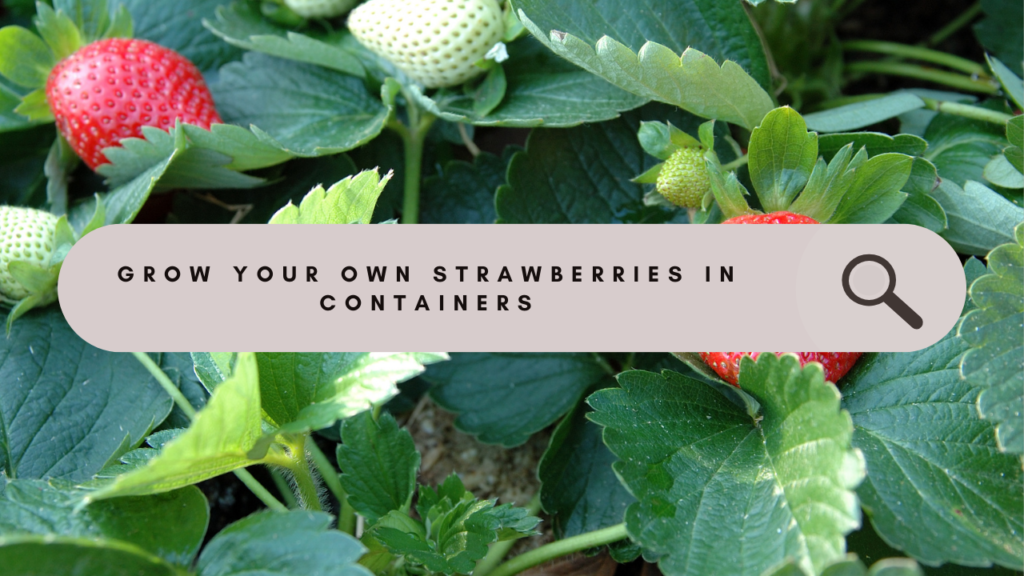
Strawberries are a delightful addition to any container garden with their ease of growth and deliciously sweet fruits. Whether you have a small balcony or a spacious backyard, growing strawberries in containers is an excellent way to enjoy juicy berries all season long. Follow our expert tips and dos and don’ts to ensure optimal growth and a bountiful harvest.
Choosing the Right Container
When selecting a container for your strawberries, opt for a pot or planter that is at least 12 inches deep to accommodate their shallow root system. Make sure the container has adequate drainage holes to prevent waterlogged soil, which can lead to root rot.
Expert Tip: Line the bottom of the container with a layer of rocks or gravel to improve drainage and prevent water accumulation at the roots.
The Perfect Soil for Strawberries
Strawberries thrive in well-draining and nutrient-rich soil. A mix of potting soil and compost provides the ideal growing medium. Avoid using garden soil, as it tends to be heavy and retains too much moisture.
Expert Tip: Incorporate organic matter, such as compost or peat moss, into the soil to improve its texture and water retention abilities.
Watering and Sunlight Requirements
Strawberries require consistent moisture to grow, so ensure your container has adequate drainage and water them regularly. Aim to keep the soil evenly moist but not waterlogged. As for sunlight, strawberries thrive in full sun, so place your containers in a spot that receives at least six to eight hours of direct sunlight each day.
Expert Tip: Mulch around the strawberry plants with straw or wood chips to retain moisture, suppress weeds, and protect the fruits from direct contact with the soil.
Feeding and Fertilizing
To promote healthy growth and fruit production, feed your strawberry plants with a balanced fertilizer specially formulated for fruits and vegetables. Follow the product instructions for application rates and frequency. Avoid over-fertilizing, as it can lead to excessive foliage growth at the expense of fruit development.
Expert Tip: Use a slow-release fertilizer to provide a steady supply of nutrients over an extended period without the risk of burning the plants.
Harvesting Plump and Sweet Strawberries
Patience is key when it comes to harvesting strawberries. Wait until the fruits are fully ripe before picking them, as they won’t ripen further after being harvested. Look for strawberries that are plump, bright red, and easily detach from the stem with a gentle tug. Remove the ripe berries carefully to avoid damaging the plant.
Expert Tip: It’s best to harvest strawberries in the morning when the fruits are cool and have the highest sugar content.
By following these tips and guidelines, you’ll be rewarded with an abundance of sweet and plump strawberries from your container garden. Harness the beauty and convenience of container gardening to grow this delectable fruit and enjoy its freshness in every bite.
Herbs: Flavorful Additions to Your Container Garden
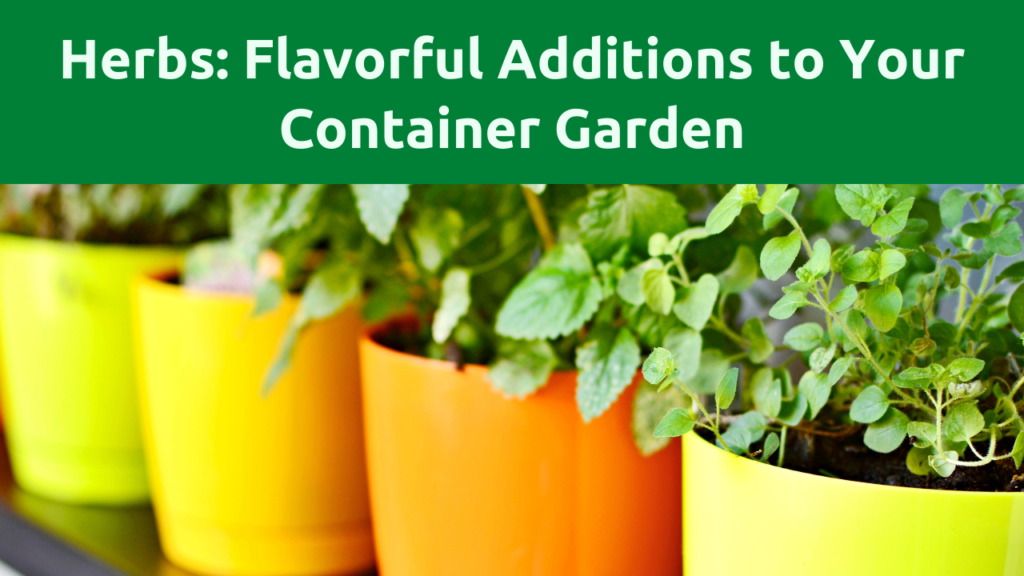
Enhance your container garden with a variety of herbs that add flavor to your culinary creations. Herbs not only provide a fresh and aromatic touch to your dishes but also add visual appeal to your garden. Whether you’re an experienced cook or simply enjoy homegrown flavors, cultivating herbs in containers offers convenience and accessibility. In this section, we will introduce you to popular herbs for container gardening and provide tips on caring for and harvesting fresh herbs for culinary delights.
Popular Herbs for Container Gardening
When it comes to herbs, you have a wide range of options to choose from. Here are some popular herbs that thrive in containers:
- Basil
- Cilantro
- Mint
- Rosemary
These herbs are not only easy to grow but also versatile in their culinary applications. From adding a refreshing twist to your drinks with mint to infusing your dishes with the flavors of basil and cilantro, these herbs will elevate your meals to the next level.
Caring for and Harvesting Fresh Herbs
Proper care is essential to ensure the health and productivity of your herbs. Here are some tips to help you care for and harvest fresh herbs:
- Light and Sun: Most herbs thrive in sunlight, so place your containers in a location that receives at least six hours of direct sunlight per day.
- Watering: Herbs prefer well-drained soil, so water them thoroughly when the top inch of soil feels dry. Avoid overwatering, as it can lead to root rot.
- Fertilizing: Apply a balanced, water-soluble fertilizer according to the package instructions to provide essential nutrients for optimal growth.
- Pruning: Regularly pinch or trim the herbs to promote bushier and more compact growth. This will also encourage the production of fresh leaves for your culinary needs.
- Harvesting: When harvesting herbs, always snip the outer leaves or stems, leaving the center intact. This allows the plant to continue growing and ensures a continuous supply of fresh herbs.
Remember to thoroughly wash your harvested herbs before using them in your cooking to remove any dirt or debris.
By following these care and harvesting tips, you’ll have a constant supply of flavorful herbs to enhance your favorite dishes. Now, let’s take a closer look at each of these popular herbs for container gardening.
| Herb | Description | Culinary Uses |
|---|---|---|
| Basil | A fragrant herb with a sweet and slightly peppery flavor. | Used in Italian cuisine, pesto, salads, and as a garnish. |
| Cilantro | A pungent herb with bright green leaves and a citrusy taste. | Used in Mexican, Thai, and Indian dishes, salsas, and guacamole. |
| Mint | A refreshing herb with a cool and minty flavor. | Used in cocktails, teas, desserts, and savory dishes. |
| Rosemary | An aromatic herb with needle-like leaves and a piney flavor. | Used in roasted meats, stews, bread, and infused oils. |
These herbs are not only delicious but also offer various health benefits. For example, basil is rich in antioxidants, cilantro aids digestion, mint soothes the stomach, and rosemary has anti-inflammatory properties. So, start growing these flavorful herbs in your container garden and enjoy the medicinal and culinary delights they bring.
Citrus Trees: Bringing Sunshine to Your Container Garden
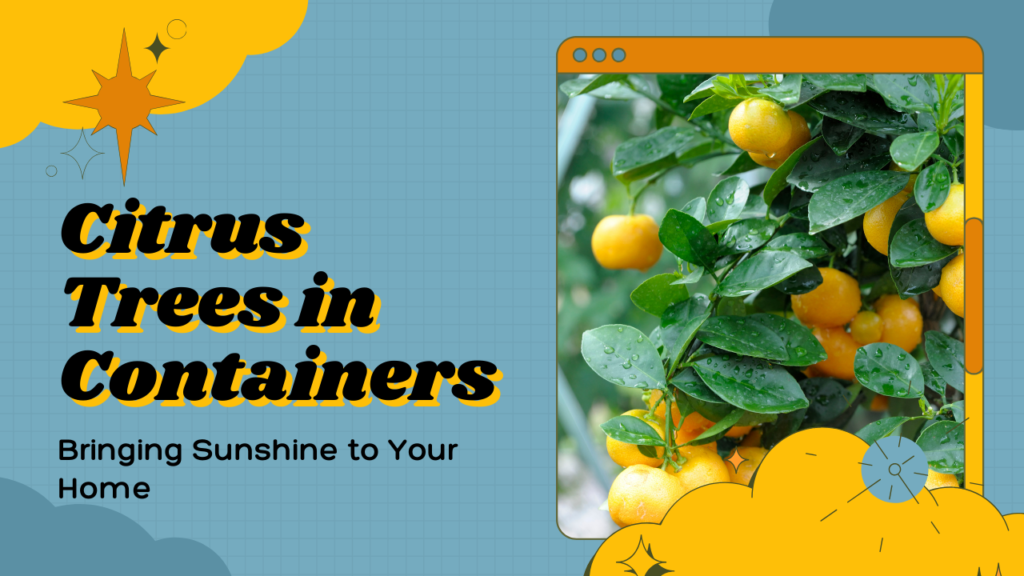
Bring a taste of the tropics to your container garden with citrus trees. These vibrant and aromatic trees not only add beauty to your outdoor space but also offer an abundant supply of fresh citrus fruits right at your fingertips. Whether you have a small balcony or a spacious patio, growing citrus trees in containers is a rewarding and enjoyable experience.
- Choosing the right citrus varieties: When selecting citrus trees for container gardening, opt for dwarf or semi-dwarf varieties that are specifically bred for compact growth. Some popular choices include Meyer lemon, Calamondin orange, and Key lime. These smaller-sized trees have shallow root systems, making them well-suited for containers.
- Tips for successful growth: To ensure your citrus trees thrive in containers, provide them with ample sunlight. Citrus trees require at least 6-8 hours of direct sunlight per day to produce juicy and flavorful fruits. Additionally, water your trees regularly, keeping the soil consistently moist but not waterlogged. Use a well-draining potting mix that allows excess water to escape easily.
- Managing pests: Citrus trees can be susceptible to pests such as aphids, mites, and scale insects. Regularly inspect your trees for any signs of infestation and take appropriate measures, such as using organic insecticidal soap or introducing beneficial insects like ladybugs.
Caring for your citrus trees in containers involves regular pruning to maintain their shape and size. It’s also important to fertilize them with a citrus-specific fertilizer according to the manufacturer’s instructions. With proper care and attention, your citrus trees will reward you with an abundance of sun-kissed fruits that are packed with vitamin C and bursting with flavor.
Whether you’re sipping freshly squeezed orange juice, adding a zesty twist to your recipes with lemons, or enjoying the refreshing aroma of citrus blossoms, growing citrus trees in containers brings the joy of sunny citrus groves right to your doorstep.
Benefits of Container Gardening for Fruits and Veggies
Container gardening offers numerous benefits for growing fruits and vegetables. Whether you have limited space, a small balcony, or want to bring your garden indoors, container gardening allows you to enjoy the rewards of homegrown produce. Here are some of the key advantages:
Ease of Maintenance
One of the major benefits of container gardening is its simplicity. Maintaining a container garden requires less effort compared to traditional garden beds. You have better control over the soil quality and can easily monitor the water needs of your plants. Furthermore, container gardens are less prone to weed growth, making maintenance much more straightforward and enjoyable.
Accessibility
With container gardening, you can bring your garden closer to you. Placing containers on raised platforms or tables can make tending to your plants less straining on your back and knees. This accessibility is particularly beneficial for individuals with mobility issues or limited mobility, allowing them to participate in gardening activities and reap the rewards of fresh fruits and veggies.
Control over Growing Conditions
In container gardening, you have the ability to control and optimize the growing conditions for your fruits and veggies. You can choose the appropriate containers that suit the specific needs of different plants. Whether it’s the right size, depth, or material, you can ensure that your plants have the ideal environment to thrive. Additionally, you can easily move the containers to adjust sunlight exposure or protect them from extreme weather conditions.
Table: Benefits of Container Gardening
| Benefits | Description |
|---|---|
| Ease of Maintenance | Container gardening requires less effort and is easier to maintain compared to traditional garden beds. |
| Accessibility | Container gardens can be placed at convenient heights, making them accessible for individuals with limited mobility. |
| Control over Growing Conditions | Container gardening allows for better control over soil quality, water needs, and exposure to sunlight. |
With these advantages, container gardening is a practical and rewarding way to grow a variety of fruits and vegetables in any space. Whether you live in an apartment, have a small backyard, or simply want to enjoy the convenience of having fresh produce at your fingertips, container gardening is a fantastic option.
Tips for Maintaining Proper Drainage and Soil Quality
Ensuring proper drainage and soil quality is essential for the health and growth of your container plants. With these tips, you can create the ideal growing conditions to support healthy root development and overall plant vitality.
Maintaining Optimal Drainage
Proper drainage is crucial to prevent waterlogging and root rot. Here are some strategies to maintain effective drainage in your containers:
- Choose containers with drainage holes to allow excess water to escape.
- Place a layer of coarse gravel or broken pottery at the bottom of the container to enhance drainage.
- Avoid overwatering your plants and ensure that water flows freely through the soil without pooling.
Ensuring Proper Soil Composition
The soil composition in your container greatly affects plant health. Consider these tips for maintaining optimal soil quality:
- Use high-quality potting soil that is well-draining and nutrient-rich.
- Amend the soil with organic matter, such as compost or peat moss, to improve moisture retention and fertility.
- Avoid using garden soil or heavy clay soil, as they can lead to poor drainage and hinder root development.
Preventing Waterlogging
Waterlogging can suffocate plant roots and cause various issues. Follow these practices to prevent waterlogging:
- Avoid placing saucers or trays under containers that can collect excess water.
- Monitor the moisture level of the soil regularly and adjust your watering schedule accordingly.
- Elevate your containers on bricks or pot feet to promote air circulation and drainage.
Quote:
“Maintaining proper drainage and soil quality is vital for the success of your container garden. By following these tips, you can provide an optimal environment for your plants to thrive and flourish.” – Gardening Expert
Common Container Plants and Their Soil Preferences
| Plant | Preferred Soil Type |
|---|---|
| Tomatoes | Well-draining soil rich in organic matter |
| Strawberries | Loamy soil with good drainage |
| Herbs | Well-draining soil with good moisture retention |
| Citrus Trees | Well-draining soil with a slightly acidic pH |
With proper drainage and soil quality maintenance, you can create an optimal environment for your container garden, ensuring the health and vitality of your plants. Follow these tips and watch your plants thrive!
FAQ
Q. What are the top fruits and veggies to grow in containers?
A. The top fruits and veggies for container gardening include tomatoes, strawberries, herbs, and citrus trees. These plants are well-suited to the limited space of containers and can thrive with proper care and maintenance.
Q. How do I choose the right containers for my garden?
A. When selecting containers for your garden, consider factors such as size, material, and drainage capabilities. Choose containers that are appropriate for the specific plants you intend to grow, ensuring they have enough space for root development.
Q. What are the best types of tomatoes for container gardening?
A. Determinate tomato varieties, such as cherry tomatoes or patio tomatoes, are excellent choices for container gardening. These varieties stay compact and produce ample fruit, making them perfect for limited spaces.
Q. What are some dos and don’ts for growing strawberries in containers?
A. Do choose a container with adequate drainage, plant strawberries in well-draining soil, and ensure they receive enough sunlight. Don’t forget to regularly water your strawberry plants and avoid overcrowding the containers to promote healthier growth.
Q. Which herbs are popular for container gardening?
A. Popular herbs for container gardening include basil, cilantro, mint, rosemary, and thyme. These herbs are flavorful additions to culinary delights and can be easily grown in containers for easy access to fresh herbs.
Q. How can I successfully grow citrus trees in containers?
A. Choose dwarf citrus tree varieties that are suitable for container gardening. Provide ample sunlight, water, and proper drainage for your citrus trees, and consider fertilizing regularly to promote healthy growth. Be mindful of temperature fluctuations and protect your trees during colder seasons.
Q. What are the benefits of container gardening for fruits and veggies?
A. Container gardening offers numerous benefits, including flexibility in location, accessibility for maintenance and harvesting, optimal control of growing conditions, and the ability to grow a variety of fruits and veggies in limited space.
Q. How do I maintain proper drainage and soil quality in my containers?
A. Ensure containers have drainage holes to allow excess water to escape. Use well-draining potting soil and avoid overwatering. Regularly monitor soil moisture levels and adjust watering accordingly. Consider adding organic matter or compost to improve soil quality.
Conclusion
In conclusion, container gardening offers a rewarding and accessible way to grow your own fruits and vegetables, no matter the size of your outdoor space. By carefully choosing the right containers, selecting suitable plants, and providing proper care, you can establish a thriving container garden that yields delicious harvests.
Whether you prefer the tangy taste of homegrown tomatoes, the sweet juiciness of freshly-picked strawberries, the flavorful punch of culinary herbs, or the refreshing zest of citrus trees, container gardening opens up a world of possibilities for your culinary adventures.
So why wait? Start your container garden today and experience the joy of harvesting your favorite fruits and veggies right at home. With a little effort and a lot of love, you can transform your outdoor space into a green oasis that nourishes both your body and soul. Happy gardening!


